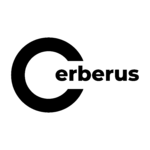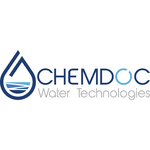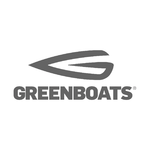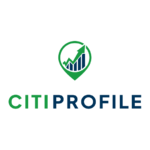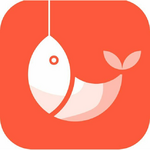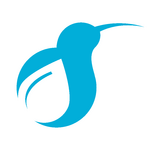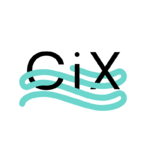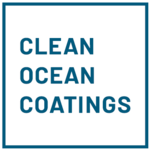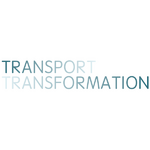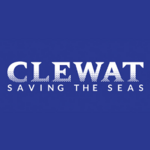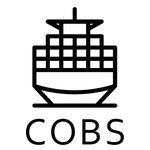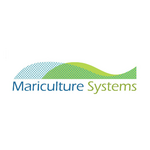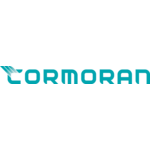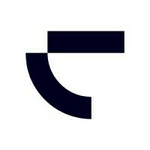reinventing maritime algae cultivation
Project TRL: TRL 4 - Component validation in laboratory environment
Main sector: Aquaculture
Sustainable Water Solutions
Manufacturer of equipment and turnkey units for industrial water and drinking water, specialist in membrane technologies and water chemistry.
We design and build turn key units, complete water treatment lines, and containerized installation from 1m3/h up to 200m3/h.
our goal is to become a major equipment supplier for water recycling in large industries
Project TRL: TRL 9 - Actual system proven through successful mission operations
Main sector: Ocean pollution & water management
We are able to replace GRP with NFC
Project TRL: TRL 9 - Actual system proven through successful mission operations
Main sector: Shipbuilding & Refit
Citiprofile is a Deep Tech startup, specializing in the production of decision support tools based on the analysis of the flow of humans and boats, with a focus on identifcation of boats under 24 meters operating without AIS.
Project TRL: TRL 6 - System/subsystem model or prototype demonstration in a relevant environment
Main sector: Blue tech and ocean observation
Citizen-science fisheries data (AR/AI)
Project TRL: TRL 7 - System prototype demonstration in a relevant environment
Main sector: Coastal and environmental protection and regeneration
We are currently concentrating on advancing the Technology Readiness Level (TRL) of our technology. It has successfully operated in a laboratory setting, but we now face the challenge of scaling it up for higher production. This involves changes in dimensions and the integration of logistics. Through this project, we aim to learn how to upscale our solution effectively. We are in the process of implementing it at large water treatment facilities. Once this project is completed, we will move to the next phase, where our system will be integrated with one treatment street of this water treatment facility.
Project TRL: TRL 6 - System/subsystem model or prototype demonstration in a relevant environment
Main sector: Ocean pollution & water management
development of our water purification systems and setting up first pilot customers in order to prepare the market entry 2026
Project TRL: TRL 6 - System/subsystem model or prototype demonstration in a relevant environment
Main sector: Ocean pollution & water management
Establishing antifouling management of tomorrow
Project TRL: TRL 6 - System/subsystem model or prototype demonstration in a relevant environment
Main sector: Shipbuilding & Refit
In collaboration with the manufacturer legal-and financial structures are set up which allow a ferry owner with excellent solvency to benefit from the latest clean-shipping technology. The assets are made available to the ship owner by providing energy-on-board as a service. For investors this is an opportunity for asset-backed clean-shipping impact investments which generate a recurring revenue while at the same time make sure emissions reduction effects.
Project TRL: TRL 8 - Actual system completed through test and demonstration
Main sector: Shipping & ports
Multipurpose sea-cleaning vessels
Project TRL: TRL 8 - Actual system completed through test and demonstration
Main sector: Coastal and environmental protection and regeneration

We recycle human hair waste from hair salons and transform it into circular Eco Design products for marine environment preservation and regenerative agriculture.
Through our hair recycling service for hairdressers we eliminate tons of hair waste that would normally go to landfill or be burnt, causing great harm upon the environment with increased CO2 emission and methane gases. With a management system in place we transform this hair waste into organic eco design products and solutions that clean and save water, increase soil health and can replace standard plastic products in ports and agriculture.
1. Hair Recycling Service
A closed loop Subscription Service for hairdressers providing real-time impact analysis of users, such as the total hair waste prevented,such as water savings, waste removal fees, reduced Co2 emissions and data intelligence of sensors. Through this we offer a New Business Model and more sustainable practices for the beauty industry.Further, a management system in place to process this waste into new products.
02.Sea Decontamination Barriers and Filters
A modular system of Sea Decontamination Barriers and filters made from hair waste that naturally adsorb hydrocarbons and heavy metals from the sea for ports and vessels. Embedded with a sensor system collecting and tracking essential water quality data and a digital platform providing real time impact analysis.
4. Sensors & IoT Platform
Products are backed up by technology and science to guarantee efficiency, transparency and authenticity. With a digital platform offering real-time analysis of economic and environmental impact. Doubling as a community hub enabling stakeholders with participation in the network.
Project TRL: TRL 7 - System prototype demonstration in a relevant environment
Main sector: Blue biotechnology
CLIC SEA targets commercial ports, vessel operators, and environmental service providers seeking sustainable, intelligent solutions for leak detection and pollution control. Our primary market includes medium to large ports across Europe, the Mediterranean, Latin America, and MENA — regions facing increasing environmental regulation and climate-related risk. We also serve port-associated vessels such as ferries, tugs, and logistics support boats through modular sensor-integrated kits. CLIC SEA’s value proposition aligns with port authorities and operators focused on ESG compliance, operational efficiency, and resilience, offering a patented, circular solution for smarter, cleaner marine infrastructure.
Project TRL: TRL 7 - System prototype demonstration in a relevant environment
Main sector: Ocean pollution & water management

Coastal Marine Litter Observatory (CMLO) is a web system designed to detect and map marine litter in the coastal zone with the combined use of drone images and machine learning methods. CMLO has proven its capability to detect and map the marine litter in the coastal zone since it has been extensively used in Greece in more than 85 km of coastline and tested in four other countries (Portugal, Ghana, Israel, Japan). CMLO is able to detect and distinguish the seven main categories of marine litter, including plastics. The system provides functionalities for interaction with the results of the detection for every beach that is monitored. The results presented through CMLO are open through a dedicated geospatial portal. CMLO includes all the derived information as geospatial information related to: points of detection, category of detection, densities of marine litter on the selected areas, litter density maps per area of interest, e.g. island or prefecture, and spatiotemporal visualizations of marine litter per area of interest. The CMLO is a tool for quantitatively presenting marine litter distribution in the coastal zone using automated classification methods. The novelty and innovation of the CMO lie in our integrated approach, where drone data in combination with AI techniques and geoinformatics united into one workflow for marine litter detection and mapping. Through the CMLO SDI portal, users can interact and compare the marine litter detection results for every beach monitored. CMLO and the produced marine litter density maps can be used as a decision-making tools for policymakers and scientists. The integration and visualization of the litter density information allow for facilitating decision-making by stakeholders. Last but not least, the litter density maps and their spatiotemporal analysis are open to the public and organizations (Governments, Local authorities, researchers, NGOs, etc.).
In the Coastal Marine Litter Observatory (CMLO), the detection of marine litter results is visualized as density maps. CMLO includes all the derived information as geospatial information related to:
Densities of marine litter on various beaches in the Greek coastline,
Litter density maps per area of interest,
Spatiotemporal visualizations of marine litter per area of interest.
Project TRL: TRL 8 - Actual system completed through test and demonstration
Main sector: Blue tech and ocean observation
COBS is a system that alerts, identify, track & trace and keep overboard shipping containers afloat.
Project TRL: TRL 4 - Component validation in laboratory environment
Main sector: Ocean pollution & water management
We are modeling Underwater communications using VLC to permits extend the distance of wireless communications under the water for POV or human-to-human.
Project TRL: TRL 4 - Component validation in laboratory environment
Main sector: Blue tech and ocean observation
Our ongoing blue economy project focuses on optimizing maritime operations through advanced IoT technology, enhancing efficiency, safety, and sustainability in the maritime industry.
Project TRL: TRL 7 - System prototype demonstration in a relevant environment
Main sector: Shipping & ports
Revolutionize sustainable fish farming with our open-sea platform.
This cutting-edge technology boasts the capacity to grow a staggering 7,000 to 10,000 tons of fish annually, even in harsh conditions with waves up to 17 meters. 24/7 automation powered by AI monitors water quality, feeding, and disease prevention, optimizing growth and yield for each fish. Our eco-friendly design minimizes emission and pollution and incorporates sustainable energy sources.
Project TRL: TRL 6 - System/subsystem model or prototype demonstration in a relevant environment
Main sector: Aquaculture
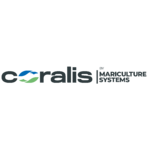
CORALIS by Mariculture Systems is the launching platform of innovative BlueTECH for offshore aquaculture that facilitates sustainable and responsible farming of the ocean.
Mariculture Systems Portugal Lda develops, constructs and deploys a launching offshore aquaculture facility 15km off the coast of Vila Real de Santo António in Portuguese Algarve, with a license to the CORALIS bluetech high-capacity offshore platform, in a pre-approved concession in the Maritime Spatial Planning.
Mariculture Systems Portugal Lda operates the farming with the Happy Fish methodology, dedicated to sustainable and responsible farming in the natural habitat, animal welfare and health, aimed at minimizing stress and optimizing fish health and quality.
The CORALIS platform facilitates growth acceleration of Portuguese aquaculture of Seabass and Seabream aiming to reduce import dependency and developing an export industry for Portuguese-branded high-quality seafood product.
The project engages into long-term partnerships with parties up- and down the valuestream, form suppliers of juveniles and fish feed to offtakers in retail, wholesale and HoReCa, to build an optimal market position with high-quality seafood product at a very short time-to-market.
The installation serves as a showcase for multiplication in Portuguese waters, both continental and in the outermost regions, as well as other locations for offshore aquaculture, where the design to withstand 9-meter significant waves and the capability to lower cages to 35 meter below sea-level can sustain harsh weather and secure continued operations all year.
The project installation will engage collaborations for continuous aquaculture innovation and marine observation, with universities, R&D entities, Ocean Observatories.
Project TRL: TRL 6 - System/subsystem model or prototype demonstration in a relevant environment
Main sector: Aquaculture
Maritime transport is an essential link in the global economy. Today, more than 100,000 ships criss-cross the world’s ocean. Unfortunately, the sector is also responsible for more than 3% of global CO₂ emissions.
Faced with this challenge, Brittany-based start-up Cormoran has developed a concept of rigid solar wings for shipowners to propel merchant ships sustainably and supply them with electricity.
Founded in 2024, the company has worked with naval architecture firm Ship-ST, of which it is a spin-off (a separate company but with the same shareholders), to develop this system.
Project TRL: TRL 3 - Analytical and experimental critical function and/or characteristic proof-of-concept
Main sector: Ocean pollution & water management
Project TRL: TRL 7 - System prototype demonstration in a relevant environment
Main sector: Blue renewable energy
Back to Pipeline
.png)
